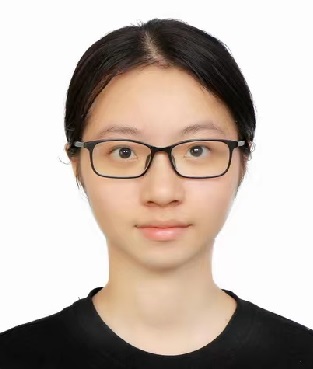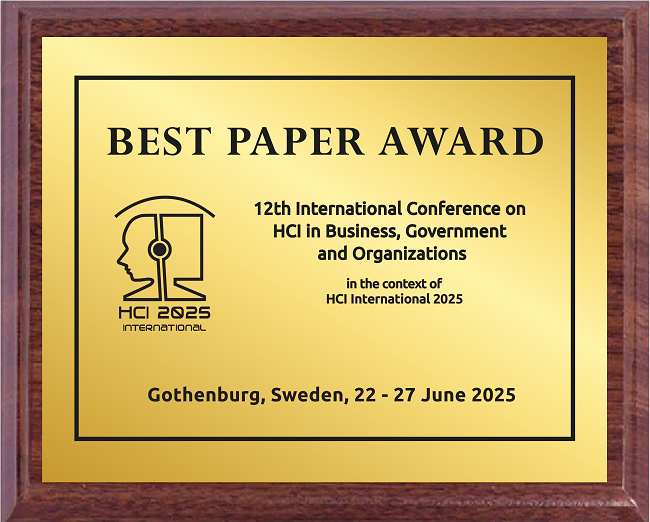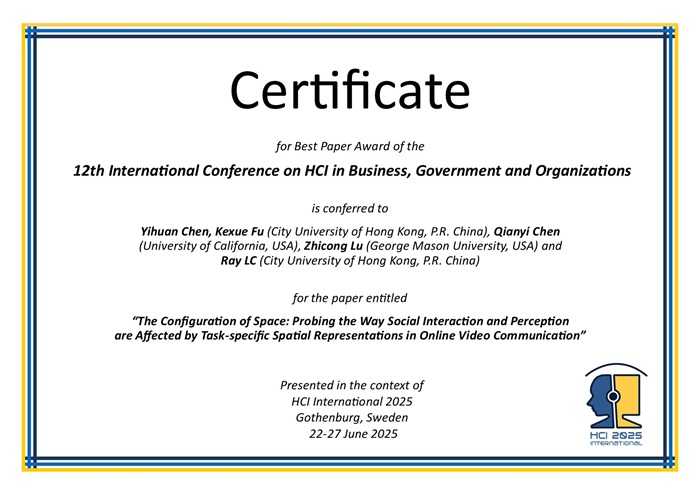The Best Paper Award of the 12th International Conference on HCI in Business, Government and Organizations
has been conferred to
Yihuan Chen, Kexue Fu (City University of Hong Kong, P.R. China), Qianyi Chen
(University of California, USA), Zhicong Lu (George Mason University, USA) and Ray LC (City University of Hong Kong, P.R. China)
for the paper entitled
"The Configuration of Space: Probing the Way Social Interaction and Perception are Affected by Task-specific Spatial Representations in Online Video Communication"

Yihuan Chen
(presenter)

Best Paper Award for the 12th International Conference on HCI in Business, Government and Organizations, in the context of HCI International 2025, Gothenburg, Sweden, 22 - 27 June 2025

Certificate for Best Paper Award of the 12th International Conference on HCI in Business, Government and Organizations presented in the context of HCI International 2025, Gothenburg, Sweden, 22 - 27 June 2025
Paper Abstract
Humans live and act in 3D space, but often work and communicate on 2D surfaces. The prevalence of online communication on 2D screens raises the issue of whether human spatial configuration affects our capabilities, social perception, and behaviors when interacting with others in 2D video chat. How do factors like location, setting, and context subtly shape our online communication, particularly in scenarios such as social support and topic-based discussions? Using Ohyay.co as a platform, we compared a normal gallery interface with a scene-based Room-type interface where participants are located in circular arrangement on screen in a social support task, and found that participants allocated attention to the group as a whole, and had pronounced self-awareness in the Room format. We then chose a two-sided topic for discussion in the Gallery interface and the Room interface where participants on each team face-off against each other, and found that they utilized spatial references to orient their allegiances, expressing greater engagement with those farther away in digital space and greater empathy with those closer, in the Room over the Gallery format. We found spatial effects in the way participants hide from the spotlight, in perspective-taking, and in their use of expressive gestures in time on the screen. This work highlights the need for considering spatial configuration in 2D in the design of collaborative communication systems to optimize for psychological needs for particular tasks.
The full paper is available through SpringerLink, provided that you have proper access rights.


